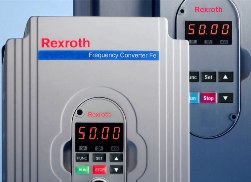Categories: Featured Articles » Practical Electronics
Number of views: 28950
Comments on the article: 0
Industrial frequency converters
How to control pump performance?
 In industrial environments, three-phase asynchronous motors are most commonly used. The simplicity of their design, reliability and low cost - these are the decisive factors that allow you to use them in many machines, units and mechanisms. In most cases, engines operate on an on-off basis.
In industrial environments, three-phase asynchronous motors are most commonly used. The simplicity of their design, reliability and low cost - these are the decisive factors that allow you to use them in many machines, units and mechanisms. In most cases, engines operate on an on-off basis.
For example, in almost all machine tools, the spindle speed is controlled by a mechanical gearbox. Moreover, it is not necessary to control the engine speed to change or maintain any technological parameter in the norm. As such a parameter, for example, one can consider the pressure at the outlet of a conventional water pump used in plumbing systems. Each of us is familiar with this parameter - just open the washbasin tap in the morning.
About twenty years ago, the task of regulating the pressure at the pump outlet was solved by controlling the valve. If an increase in outlet pressure was required, then the valve was opened; to reduce the same valve had to be closed. Regulation was carried out in the same way as a faucet in the bathroom. The operator on duty was engaged in such manipulations, focusing on the readings of the manometer.
Later they began to use the same regulation principle in water supply automation systems, where the functions of the mentioned operator were performed by sensors and a controller, and in some cases also a personal computer. In fairness, it should be noted that this method of management is still widely used, although everywhere they try to get rid of it.
Such a regulation system can be compared with a car in which the engine will be constantly turned on at full throttle. Then the speed changes only by the degree of depressing the brake pedal. It is obvious that fuel consumption is always maximum, most of the gasoline just flies uselessly into the exhaust pipe, and the wear of the brake system will be complete and quick. The comparison may not be very successful, but quite similar: in the case of an electric pump, instead of gasoline, energy is wasted and the pump itself wears out.
Currently, it has become more optimal for controlling the performance of pumps and other equipment requiring stepless speed and power control. variable frequency drive. Many companies offer a wide range of diverse frequency converters, designed to solve any technological problems. The power of the proposed devices ranges from several hundred watts to 500 kW or more.
A frequency converter is the best way to control a three-phase motor, or briefly about the principles of frequency regulation
 The most effective way to change the speed of an AC motor is to frequency regulation. Its basic principle is that the supply voltage and its frequency can vary in accordance with the required ratio, which is determined depending on the nature of the motor load.
The most effective way to change the speed of an AC motor is to frequency regulation. Its basic principle is that the supply voltage and its frequency can vary in accordance with the required ratio, which is determined depending on the nature of the motor load.
The rotational speed of the rotor of an induction motor, as you know, depends on the frequency of the power source. Therefore, by varying the frequency of the supply voltage, it is possible to widely vary the rotor speed. At the same time, motors with squirrel-cage and with a phase rotor work equally well in frequency control systems, which makes it possible to fully implement energy-saving technologies.
From the foregoing, we can conclude that to control the speed of an induction motor, first of all, an AC voltage source of adjustable frequency is needed. Mass production of such sources was made possible by the creation of semiconductor static frequency converters, or, as they are often called, chastotnikov.
The creation of chastotniks was facilitated by the development of a modern elemental base, primarily, specialized microcontrollers and transistors of the IGBT structure. Obviously, the use for this purpose of a synchronous generator with an adjustable speed (such methods were once used) is not justified either by economic or technical considerations.
Modern frequency converters (another name for these devices "Three-phase inverter") branded production are quite universal in all respects, have high reliability, provide various load characteristics on electric motors, allow the use of electric motors of various types.
It would seem that what else is needed? Buy and work! But there is such a restless category of people as ham radio enthusiasts who became interested in regulating the rotational speed of three-phase motors long before branded ones appeared on sale industrial frequency converters.
However, branded devices did not stop amateur radio research in this area: still appear on the pages of amateur radio magazines frequency converter circuits. Of course, repeating all these old circuits now may not be worthwhile, but their consideration will help to understand the general principles of constructing frequency converter circuits, the principles of their operation. And knowledge of these principles can help with the purchase of a proprietary frequency converter, as well as understand its scheme in case of repair.
Continuation of the article: Schemes of amateur frequency converters.
Boris Aladyshkin
See also at bgv.electricianexp.com
:
